 School Committee Meeting 15 February 20176 present, SC Descoteaux absent, Student representative: Onoste OmoyeniMr. Gignac requests taking Eagle Scout Michael Wojas’ report on textile recycling out of order.Permissions to EnterUsually the Permissions to Enter are not all that controversial. Not tonight. The inclusion of a request for $4,921,313 for Aramark (1 year contract extension) generated about 45 minutes of discussion (my comments follow).$4,981,113 in expenses ($4,921,313 allocated to Aramark in order to exercise a 1-year option for food service management in 2017-18), See detail in the Meeting Packet (downloadable PDF)SC Gignac speaks to some issues he noticed during a recent visit to a satellite school (in food-service lingo, that would be a school where there is no kitchen. The lunches are prepared at another site (the Rogers) and transported.). SC Gignac noted the unappetizing appearance of the food, noting that the hot meal he observed was unidentifiable, and the marginally acceptable freshness. The director of the school shared he/she had to sort through a bin of fresh food (fruit, I believe) and remove rotten food. Mr. Gignac noted that the serving size (the school serves middle- and high-school age youth) was small, the presentation was unappetizing and the quality not acceptable. He notes that some schools with kitchen have experienced similar issues with food service in the past and expresses discomfort in awaarding a 1-year contract extension to Aramark.The Aramark representative (name not given) cites some possible transportation issues that resulted in the food quality; however, the portion sizes provided are regulated by USDA and Aramark adheres to those portion regulations.SC Gignac questions why satellite schools do not have more than one food choice. Aramark representative states there are some choices (hot meal, salad, and sandwich choice). Both SC Gignac and SC Hoey who were making a visit noted that on this visit a salad and “hot meal” were offered, but not the sandwich option which should have offered. Both SC members note that school lunch is especially important to students in this setting as the in-school meal is possibly the only meal the students access. SC Gignac repeats that he would like to see an improvement prior to awarding an extension. SC Hoey notes that the quality of food at the alternative school (LeBlanc) was poor; the food quality was unacceptable and needs to be improved. SC Gignac photographed the food he observed during his school visit and shared that image with other school committee members.SC Doherty proposes a motion like to take the Aramark expenditure out of Permissions to Enter.The unnamed Aramark representative mentions that the Lowell management group is working with Worcester’s operation to learn if there are improvements that can be initiated in Lowell. Mayor Kennedy asks for explanation as to why a sandwich choice would have be missing from a day’s delivery (snow days, delivery issues, food choice not ordered). If I understood this conversation correctly, there was an assertion that the school clerk at times makes lunch selection decisions (see my comments following). A second Aramark representative, Sharon Lagasse, visited Worcester’s satellite program and explains that the hope is to learn some techniques for efficiency that could be implemented in Lowell to improve satellite school food service.SC Gignac asks for permission for LeBlanc Social Worker to speak to the concerns from the school’s perspective (older students need more food/larger portion, noticing the difference in portion sizes and options offered at LHS (where some of the students at this school originate) causes students to feel that they don’t deserve equitably food service quality, and sometimes lunch offering is a motivation for students to attend school).Dr. Khelfaoui asserts that delaying the line item approval is a bad idea. He expresses disappointment that he is hearing about the meal issues for the first time at this school committee meeting. States that he will issue a directive about the procedure for lunch choice will be in place as of tomorrow and feels this is a communication issue, not a food quality issue.SC Gendron asks if delaying this line item from tonight's Permissions until next meeting would have any ill-effects. Mr. Frisch feels he can give a report of what corrections can be or have been be implemented by the next meeting and the line item can be re-entered. Ms. Omoyeni speaks in favor of SC Doherty’s motion - not a punitive process but an investigative process. Roll call 6 yeas, 1 absent, approved.Some years ago, there was an effort to provide students with more than one choice for lunch: a hot choice, a salad, and a sandwich. To manage food preparations, students at the elementary school where I taught (which did have a kitchen), made their lunch choice of lunch from the menu when they arrived in the morning. Those lunch counts were sent to the school clerk in the morning and forwarded to the kitchen staff. In a satellite school, I’d imagine that a similar process takes place with the count of how many lunches of each category sent to the central kitchen by the school’s clerk. The policy at the time in the school in which I worked was that students who arrived tardy, were served the hot lunch choice by default. I wonder if the reference to a clerk “making lunch choices” might be confused with the clerk transmitting lunch counts and, if a student arrived tardy, the sandwich/salad choices were not available for practicality. School lunch, as some Committee Members noted, can sometimes be the only real meal a student eats during a day - that is a sad fact for some students living below the poverty line. Lunches that are unappealing and fresh foods that have gone beyond expiration should never be served no matter what. Pressing the pause button before engaging an extension of a food contract, even a one-year contract, not only sends the message that the School Committee cares about the quality of meals served to our students, but lets a very large corporate contractor know that the expectation for quality and healthy food service is a priority. As Ms. Omoyeni noted, this pause is not punitive, it is informative.SC Martin does not participate in the CTI line item for permission to enter ($9,000). 5 yeas, 2 absent, approved.All other permissions were approved (6 yeas, 1 absent, approved).MotionsThree motions made, all by SC Doherty.
School Committee Meeting 15 February 20176 present, SC Descoteaux absent, Student representative: Onoste OmoyeniMr. Gignac requests taking Eagle Scout Michael Wojas’ report on textile recycling out of order.Permissions to EnterUsually the Permissions to Enter are not all that controversial. Not tonight. The inclusion of a request for $4,921,313 for Aramark (1 year contract extension) generated about 45 minutes of discussion (my comments follow).$4,981,113 in expenses ($4,921,313 allocated to Aramark in order to exercise a 1-year option for food service management in 2017-18), See detail in the Meeting Packet (downloadable PDF)SC Gignac speaks to some issues he noticed during a recent visit to a satellite school (in food-service lingo, that would be a school where there is no kitchen. The lunches are prepared at another site (the Rogers) and transported.). SC Gignac noted the unappetizing appearance of the food, noting that the hot meal he observed was unidentifiable, and the marginally acceptable freshness. The director of the school shared he/she had to sort through a bin of fresh food (fruit, I believe) and remove rotten food. Mr. Gignac noted that the serving size (the school serves middle- and high-school age youth) was small, the presentation was unappetizing and the quality not acceptable. He notes that some schools with kitchen have experienced similar issues with food service in the past and expresses discomfort in awaarding a 1-year contract extension to Aramark.The Aramark representative (name not given) cites some possible transportation issues that resulted in the food quality; however, the portion sizes provided are regulated by USDA and Aramark adheres to those portion regulations.SC Gignac questions why satellite schools do not have more than one food choice. Aramark representative states there are some choices (hot meal, salad, and sandwich choice). Both SC Gignac and SC Hoey who were making a visit noted that on this visit a salad and “hot meal” were offered, but not the sandwich option which should have offered. Both SC members note that school lunch is especially important to students in this setting as the in-school meal is possibly the only meal the students access. SC Gignac repeats that he would like to see an improvement prior to awarding an extension. SC Hoey notes that the quality of food at the alternative school (LeBlanc) was poor; the food quality was unacceptable and needs to be improved. SC Gignac photographed the food he observed during his school visit and shared that image with other school committee members.SC Doherty proposes a motion like to take the Aramark expenditure out of Permissions to Enter.The unnamed Aramark representative mentions that the Lowell management group is working with Worcester’s operation to learn if there are improvements that can be initiated in Lowell. Mayor Kennedy asks for explanation as to why a sandwich choice would have be missing from a day’s delivery (snow days, delivery issues, food choice not ordered). If I understood this conversation correctly, there was an assertion that the school clerk at times makes lunch selection decisions (see my comments following). A second Aramark representative, Sharon Lagasse, visited Worcester’s satellite program and explains that the hope is to learn some techniques for efficiency that could be implemented in Lowell to improve satellite school food service.SC Gignac asks for permission for LeBlanc Social Worker to speak to the concerns from the school’s perspective (older students need more food/larger portion, noticing the difference in portion sizes and options offered at LHS (where some of the students at this school originate) causes students to feel that they don’t deserve equitably food service quality, and sometimes lunch offering is a motivation for students to attend school).Dr. Khelfaoui asserts that delaying the line item approval is a bad idea. He expresses disappointment that he is hearing about the meal issues for the first time at this school committee meeting. States that he will issue a directive about the procedure for lunch choice will be in place as of tomorrow and feels this is a communication issue, not a food quality issue.SC Gendron asks if delaying this line item from tonight's Permissions until next meeting would have any ill-effects. Mr. Frisch feels he can give a report of what corrections can be or have been be implemented by the next meeting and the line item can be re-entered. Ms. Omoyeni speaks in favor of SC Doherty’s motion - not a punitive process but an investigative process. Roll call 6 yeas, 1 absent, approved.Some years ago, there was an effort to provide students with more than one choice for lunch: a hot choice, a salad, and a sandwich. To manage food preparations, students at the elementary school where I taught (which did have a kitchen), made their lunch choice of lunch from the menu when they arrived in the morning. Those lunch counts were sent to the school clerk in the morning and forwarded to the kitchen staff. In a satellite school, I’d imagine that a similar process takes place with the count of how many lunches of each category sent to the central kitchen by the school’s clerk. The policy at the time in the school in which I worked was that students who arrived tardy, were served the hot lunch choice by default. I wonder if the reference to a clerk “making lunch choices” might be confused with the clerk transmitting lunch counts and, if a student arrived tardy, the sandwich/salad choices were not available for practicality. School lunch, as some Committee Members noted, can sometimes be the only real meal a student eats during a day - that is a sad fact for some students living below the poverty line. Lunches that are unappealing and fresh foods that have gone beyond expiration should never be served no matter what. Pressing the pause button before engaging an extension of a food contract, even a one-year contract, not only sends the message that the School Committee cares about the quality of meals served to our students, but lets a very large corporate contractor know that the expectation for quality and healthy food service is a priority. As Ms. Omoyeni noted, this pause is not punitive, it is informative.SC Martin does not participate in the CTI line item for permission to enter ($9,000). 5 yeas, 2 absent, approved.All other permissions were approved (6 yeas, 1 absent, approved).MotionsThree motions made, all by SC Doherty.
- 6.I. [J Doherty]: Request the City Manager to provide the Committee with a report that details the City’s Maintenance of Effort Agreement for the last 3 years related to expenditures on the schools. (Typographical error; correction underlined).
Maintenance of Effort funding is sizeable and SC Doherty would like to examine how these services a provided to the schools. SC Hoey supports the motion and thinks the information should have been made available and transparent 25 years ago. Mayor Kennedy thinks it is worthwhile to go through the Maintenance of Effort jointly between Schools and City administrations. Passed.The Maintenance of Effort amounts confuse me; I understand that some services are provided to the school department by the city (data processing, snow removal as examples). Making these expenditures transparent hopefully will improve understanding of costs and funding between the school department and the city.
- 6.II. [J Doherty]: Request the Superintendent provide the committee with a report of the transportation cost estimates of bussing students to a high school at Cawley over the next 12 years based on the number of students by neighborhood currently attending our schools.
SC Doherty would like this information as the Lowell High School project costs are calculated and how those costs might impact future budgeting.
- 6.III. [J Doherty]: Request the Superintendent provide the committee with a report that looks at our K-12 student population by zip code to determine the number of students from each neighborhood.
In addition to this information, SC Gignac asks about the status for zoning of schools. Ms. Durkin notes that the location of a STEM middle school may impact such a report. SC Gendron asks about neighborhood zoning (moving from city-wide to neighborhood bus scenarios); Ms. Durkin can include this; however, the desegregation plan either has to be vacated or adhered to and this will have an impact on creating city-wide busing. The creation of City-wide schools was a result of the desegregation plan and ensure that equity is achieved. SC Martin notes the profound impact of vacating a desegregation order (she would not be opposed to such a move if it negates the primacy of every child attending a desegregated school in Lowell). PassedReports of the SuperintendentThere were 8 items under Reports of the Superintendent.
- 7.I Knowledge Bowl Schedule (see packet for dates and competition details)
- 7.II Lowell High School Graduation Date & Speaker Announcement (see packet for information)
- 7.III. Response To Robert Gignac's Motion Of 01/18/17 Regarding Extracurricular Activities Throughout The District
SC Gignac requests the addition of how many student participate.
- 7.IV. Response To Jacqueline Doherty’s Motion Of 01/18/17 Regarding The Time Allocated For Recess, Lunch, Physical Education, And Health
Registered speaker (Darcie Boyer) member of City-wide Parent Council and LEJA. Thanks the administration for report but notes the disparity of times across the schools. The CPC will examine this issue in more detail at their next meeting. Notes the importance of lunch/nourishment and free time to student well-being.So many studies remind and inform us that in order to be ready for of learning and retain learning, students need a balance of “down time” - play and academic time. Students of all ages need to be active, to expend excess energy, to socialize, to have a brain break. So with all this information on the importance of social and emotional health, why do schools continue to shave away recess time? Why are 6 and 7 year olds asked to sit still and work their brains without a break? As the academic demands have increased on students, the response has generally been to increase "time on task" to the point that young learners are expected to sit still far beyond what they are developmentally capable of doing. Here's a link from Harvard Medical School as an example of why it is so important to give students down time, but don't stop with just one opinion. Fifteen minutes of recess (which oftentimes includes getting ready to go outside and walking to the play area); 20 minutes (or less) to walk to the cafeteria, go through a lunch line, and eat - none of this is adequate for student well-being.SC Doherty thanks administration for the information; notes 10-minute recess, 15-minute lunches do not include transport. Makes a motion to refer report jointly to Curriculum and Student Services subcommittees to find some way to return to other aspects now that NCLB has been replaced by ESSA. SC Martin would like some additional information about the disparity of times between urban and suburban districts. Passed.
- 7.V. Monthly Budget Report
- 7.VI and 7.VII School Calendar and School Committee Meeting Dates for 2017-18
- 7.VIII. Personnel Report
All superintendent’s reports 7.I through 7.V passed. 7.VI approved by roll call (6 yeas, 1 absent, approved). 7.VII (first reading - no action). 7.VIII approved.New Business:Educational Research request approved (6 yeas, 1 absent, approved)(Taken out of order): Michael Wojas, a LHS 2016 graduate, gives an update on his Eagle Scout project, a textile recycling effort which was a collaboration with Lowell’s Solid Waste and Recycling as well as Bay State Textiles. Mr. Wojas who is enlisting in the Navy at the end of February, has designed a project to recycle effort. The monies raised through the recycling project results in some fundraising based on the amount of textiles collected and recycled. Currently, recycling boxes are sited at 15 Lowell schools, with the hope that middle schools will become involved in the near future. To date just under 2,000 pounds of textiles resulting in rebates of $7,731 which then go to support the schools. The Lincoln School, Morey School and Reilly School have been the top collectors of textiles. The bin upkeep is maintained by Bay State Textiles at no cost to the City.Meeting detail and support documentation can be found here.
 School Committee Meeting 05 April 20177 Members Present, Student representative: Cole Conlin Spotlight on Excellence & Permissions to Enter.
School Committee Meeting 05 April 20177 Members Present, Student representative: Cole Conlin Spotlight on Excellence & Permissions to Enter.
 According to the current Secretary of Education, Betsy DeVos, parents need to have a choice in a child's education. It appears, however, that "choice" has limits.According to state and federal government, there should be a "choice" of educational setting. School setting is a choice, whether it is public, charter, private, or religious. That's a good choice according to the government. Using federal funds to pay for vouchers? That's the current federal proposal. And our government claims that that kind of choice is also a "good" choice.However, if you exercise your parental judgement by choosing to opt your child out of long, arduous, standardized tests like MCAS 2.0 or PARCC, then your choice as a parent is questionable. The Massachusetts Department of Elementary and Secondary Education really does not want parents to make that choice. Why? Because in assessments, unless a significant number of students participate in those tests, the reported results may become skewed or inaccurate.The issue of test participation rates is part of the newest federal education act, ESSA (Every Student Succeeds Act). The current
According to the current Secretary of Education, Betsy DeVos, parents need to have a choice in a child's education. It appears, however, that "choice" has limits.According to state and federal government, there should be a "choice" of educational setting. School setting is a choice, whether it is public, charter, private, or religious. That's a good choice according to the government. Using federal funds to pay for vouchers? That's the current federal proposal. And our government claims that that kind of choice is also a "good" choice.However, if you exercise your parental judgement by choosing to opt your child out of long, arduous, standardized tests like MCAS 2.0 or PARCC, then your choice as a parent is questionable. The Massachusetts Department of Elementary and Secondary Education really does not want parents to make that choice. Why? Because in assessments, unless a significant number of students participate in those tests, the reported results may become skewed or inaccurate.The issue of test participation rates is part of the newest federal education act, ESSA (Every Student Succeeds Act). The current  If you don't know about H.R. 610, here is a link to the text and the bill's progress. I urge you to follow it and, if you feel strongly about it, respond to it. While my Congressional Representative is not a member of the House Committee currently reviewing this legislation, I want her to know exactly how this bill will impact our Local Education Agency (LEA).A tacked on provision in this legislation can be found at the very end: dismantling (my word) of the No Hungry Kids Act. Under the No Hungry Kids Act, fruit and vegetable offerings increased and low- and non-fat milk was offered. Those requirements would be removed. Additionally, the proposal in HR610 would eliminate monitoring school lunch/breakfast choices for sodium, trans fats and saturated fats.Why does this matter? Childhood and adult obesity continues to be a factor in health and well-being. In school food programs students are exposed to healthier eating options. If you are unfamiliar with the effects of less healthy food choices, read
If you don't know about H.R. 610, here is a link to the text and the bill's progress. I urge you to follow it and, if you feel strongly about it, respond to it. While my Congressional Representative is not a member of the House Committee currently reviewing this legislation, I want her to know exactly how this bill will impact our Local Education Agency (LEA).A tacked on provision in this legislation can be found at the very end: dismantling (my word) of the No Hungry Kids Act. Under the No Hungry Kids Act, fruit and vegetable offerings increased and low- and non-fat milk was offered. Those requirements would be removed. Additionally, the proposal in HR610 would eliminate monitoring school lunch/breakfast choices for sodium, trans fats and saturated fats.Why does this matter? Childhood and adult obesity continues to be a factor in health and well-being. In school food programs students are exposed to healthier eating options. If you are unfamiliar with the effects of less healthy food choices, read  Remember the episode
Remember the episode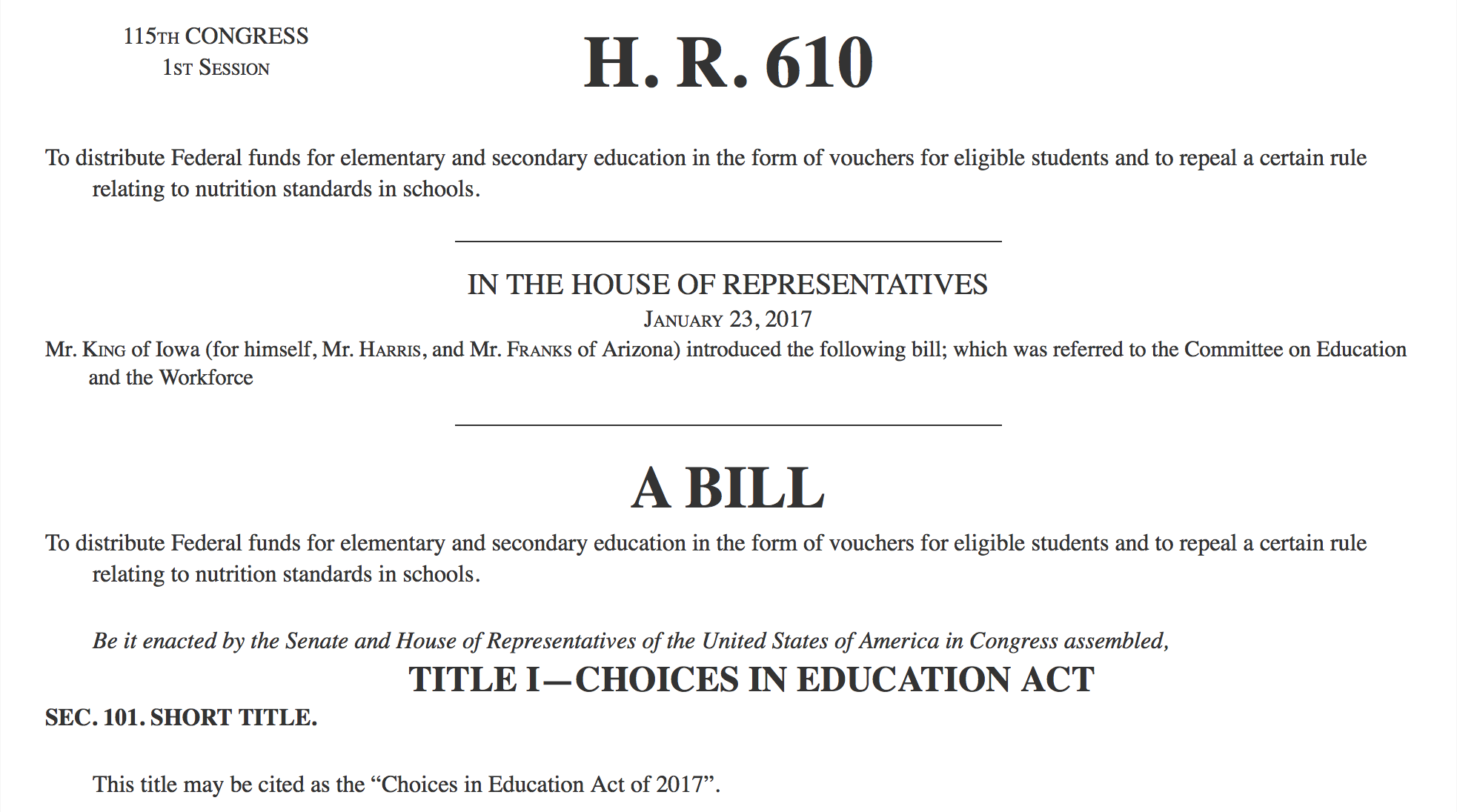
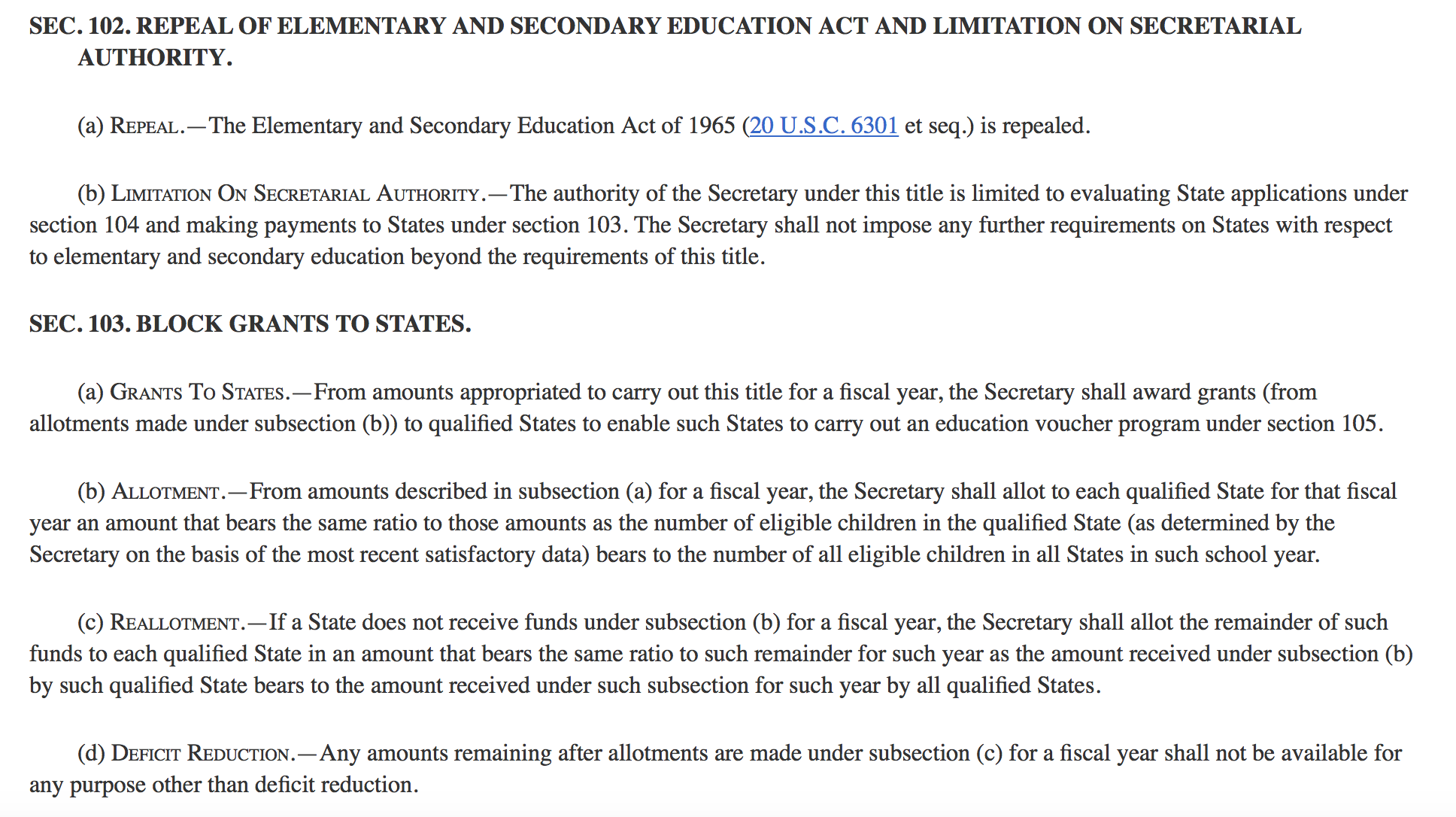 So here are some of my questions:The funding: Although HR610 does not come right out and say it directly, can we all suppose that by eliminating the Elementary & Secondary Act of 1965 and all of the amendments, any further funding of current federal grant programs will disappear? And through elimination of this funding source, what services currently available to students and families will disappear?This financial report, from the Feb. 15 2017 Lowell School Committee Meeting shows the sources of Grant Funding and expenditures to date. <
So here are some of my questions:The funding: Although HR610 does not come right out and say it directly, can we all suppose that by eliminating the Elementary & Secondary Act of 1965 and all of the amendments, any further funding of current federal grant programs will disappear? And through elimination of this funding source, what services currently available to students and families will disappear?This financial report, from the Feb. 15 2017 Lowell School Committee Meeting shows the sources of Grant Funding and expenditures to date. <

 School Committee Meeting 15 February 20176 present, SC Descoteaux absent, Student representative: Onoste OmoyeniMr. Gignac requests taking Eagle Scout Michael Wojas’ report on textile recycling out of order.Permissions to EnterUsually the Permissions to Enter are not all that controversial. Not tonight. The inclusion of a request for $4,921,313 for Aramark (1 year contract extension) generated about 45 minutes of discussion (my comments follow).$4,981,113 in expenses ($4,921,313 allocated to Aramark in order to exercise a 1-year option for food service management in 2017-18), See detail in the
School Committee Meeting 15 February 20176 present, SC Descoteaux absent, Student representative: Onoste OmoyeniMr. Gignac requests taking Eagle Scout Michael Wojas’ report on textile recycling out of order.Permissions to EnterUsually the Permissions to Enter are not all that controversial. Not tonight. The inclusion of a request for $4,921,313 for Aramark (1 year contract extension) generated about 45 minutes of discussion (my comments follow).$4,981,113 in expenses ($4,921,313 allocated to Aramark in order to exercise a 1-year option for food service management in 2017-18), See detail in the 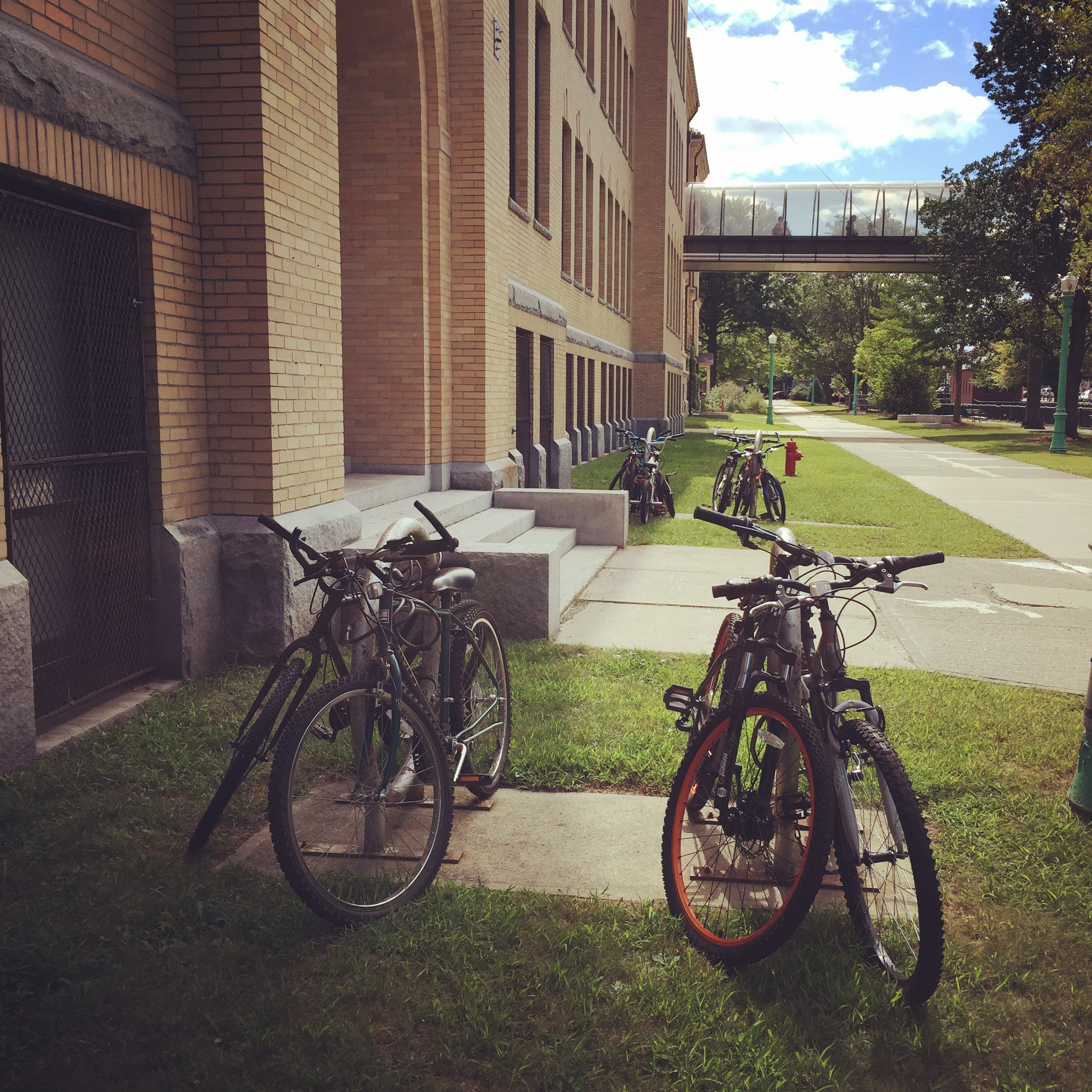 School Committee Meeting 16 November 2016Six present, Mayor Kennedy Absent (SC Gendron presiding)The attention of the School Committe was on the Middle School Report (Item 12) and Joint Subcommittee Minutes.Special Order of BusinessSC Gendron introduces both Principal Carmona of the Lincoln School and Francey Slater from Mill City Grows to speak about the recent Lincoln School Garden construction; a project video can be found
School Committee Meeting 16 November 2016Six present, Mayor Kennedy Absent (SC Gendron presiding)The attention of the School Committe was on the Middle School Report (Item 12) and Joint Subcommittee Minutes.Special Order of BusinessSC Gendron introduces both Principal Carmona of the Lincoln School and Francey Slater from Mill City Grows to speak about the recent Lincoln School Garden construction; a project video can be found 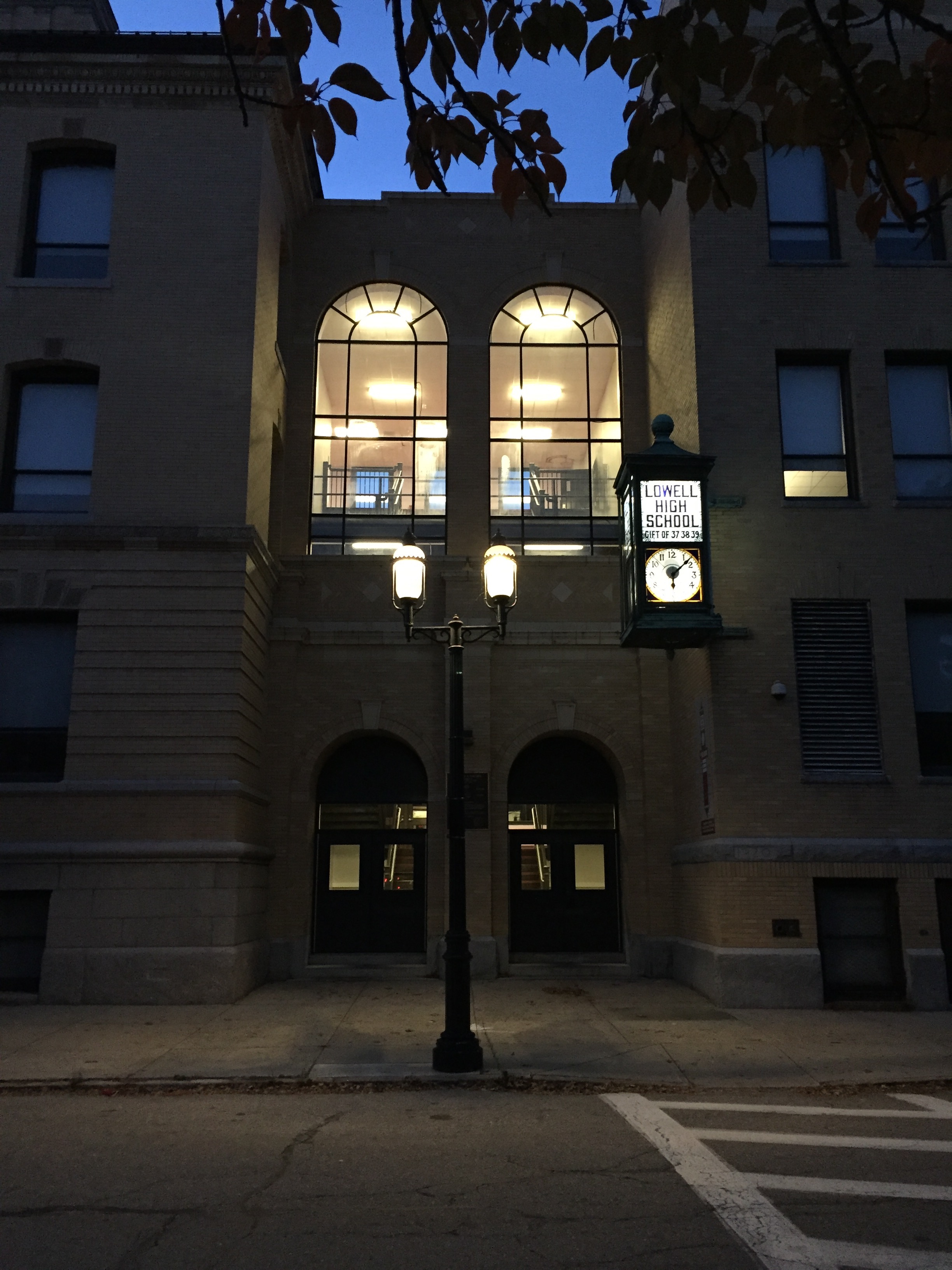 Joint Facilities SubCommittee Meeting (School Committee and City Council)Six presentThe meeting was requested jointly by the Lowell School Committee and the Municipal Facility Subcommittee. It took place prior to the regularly scheduled School Committee Meeting for the purpose of addressing two agenda items.Agenda Item 1: Discuss the Superintendent’s plan to address the over-crowding in middle schools in the 20170-2018 school year.Gary Frisch addresses joint committee. Superintendent & Leadership Team worked together to provide recommendation. Enrollment last year went up 137 students at middle school, 176 total for grades K-12. Additionally, 4 5th-grade classes were added last year. Class size calculated for 2017-18, average 26.3 to 30.5/classroom (predictions of 32 last year) without adding classrooms. SC Gendron notes last year the projection was 28-30 with Rogers/Wang solution in place. Adding classrooms at STEM Academy would reduce class sizes city-wide (4 sections of 5th, 2 sections of 6th - increase 4 new classroom spaces at STEM Academy as students move to next grade level). The plan involves converting two spaces - home ec & TV studio plus conversion of smaller divided instructional spaces. The LPSD would need to promote the STEM Academy as a Middle School option to the Grade 4 students transitioning to Middle School for 2017-18.The student population at the STEM Academy would increase from 606 to 756 students and would require additional staff and supply resources.SC Gendron asks about how the proposed plan impacts class size. Mr. Frisch believes these adaptations bring average class size to 26-28. Questioned if the average would be reduced, Mr. Frisch believes the average would be reduced.SC notes current report states 28 students per class is a "band-aid" and doesn’t like putting a temporary solution in place. What happens if the proposal before the committee is not agreed upon? Mr. Frisch believes the current fifth grade students would be matriculated to 6th grade at STEM. SC Gignac asks if this 2017-18 plan in not in place, what would happen. Mr. Frisch reiterates that 4 fourth-grades at Rogers going to fifth grade plus 2 fifth grades going to 6th grade would mean additional classrooms.SC Hoey wonders about adding a fifth grade to each PK-4 school. Mr. Frisch says new high school project may provide different space capacity (opening the Freshman Academy). Currently space options are limited as buildings are at capacity. Present time is a space crunch but administration looking at adding space without using modular (not cost-effective and are quite expensive). CC Hoey reiterates that the high school project is about five years off so that makes the impact of the high school project something to consider for the future.CC Leahy questions STEM Academy capacity proposal (150 students). What additional resources will be needed? Mr. Frisch notes a need for additional teachers, an additional assistant principal, and other resources. CC Leahy states he is not aware that the new high school project might prompt closing of the Freshman Academy. SC Gendron says this is an idea that was “floated” but it is one of several suggestions for configuration of grades after the high school project is completed. CC Leahy still concerned about class size. CC Samaras notes he would like more of the report to look at (much of the report appeared to be delivered verbally) and wonders about the feasibility of an “extended day” (requires agreement of parents, school department, bargaining units). He would prefer to see money spent on teachers over acquiring physical spaces temporarily.SC Gendron expresses concern that this is a “band-aid”: too late in bid for modulars similar to the solution arrived at last school year. and voices opinion this proposal is a “band-aid on a band-aid.” A reasonable class size needs to be prioritized. SC Gignac would like some consideration given to what happens in 2018-19 with STEM Academy students who will be seventh graders. He suggest that his prior request for an RFP for modulars should have been addressed. He suggests it would be useful to see a comprehensive plan with multiple scenarios.Mr. Frisch expresses that the goal of 26 students (or less) per average class gives the school Leadership Team a target and is helpful in developing a plan with the Leadership Team. SC Gendron expresses that a lower average class size (20) would be even more preferable.CC Mercier would have appreciated a written plan at the meeting. Would like a report in the City Council packet by Friday. Mr. Frisch states that a report could be in packet the following Friday. Notes the many costs that are associated with adding classroom (buses, personnel, supplies). SC Hoey notes that the staffing in schools with close to 16,000 students in the schools is an issue to consider; notes 20 years ago, Lowell built many schools to accommodate student population. CC Leahy notes the lowest class size should be what we try for. CC Samaras urges consideration of an extended day. and would like the school department to consider programming that may not be working well. By analyzing the programming, there may be a gain in space. Encourages a study of programs to see if any changes of this nature might be necessary.Agenda Item 2: Discussion regarding facility maintenance in schools and school grounds.CC Leahy notes that the purpose of this discussion is to come up with a better plan to maintain Lowell’s schools. Notes that there have been changes in the players. Is there a way to stay ahead of the repairs/work orders? Notes that in his touring of facilities, noted disrepair of the high school building and that some of the issues seem to be ongoing. Especially concerned about the process in getting repairs done; it shouldn’t take a year to make minor repairs. November 1 should not be when broken heating equipment is discovered. We can’t let the high school fall down around us because we’re expecting a new one.Mr. Frisch notes that the School Department is responsible for cleaning of the building. Proposes a joint administrative committee to work on the maintenance issues and states that deferred maintenance is bad for student learning. Definition of shared responsiblities needs better articulation. Current status is unacceptable.CC Samaras agrees with frustrations and notes never enough money to do everything we need to do. Asks how school administration/custodial staff and central office staff prioritize the work that needs to be completed. Finding fault should not be the purpose of this review. Focus on the process that will ensure students are in a comfortable and safe situation.CC Mercier notes 19 schools with a boiler, roof leak or air handler leak problem. How did it get to this point that they are leaking simultaneously? What is the plan to address this? Mr. Frisch agrees the current status is unacceptable. Notes need for urgent plan to address these repairs and that every child needs a healthy learning environment. CC Mercier states that heating and the need for students need to wear coats in a classroom is a concern that needs to be addressed.CC Leahy notes that new people in place and the need to reorganize and manage this better. SC Hoey asks about the amount for charge-backs from City to School Deparment. SC Gendron reminds joint committee that all the equipment in the schools built 30 years ago are all turning 30 at the same time (and needing major repair/replacement). Requests Mr. Underwood to speak to facilities status. Mr. Underwood suggests that custodial staff could do some of the things that do not require permits; however collective bargaining limits that. Willing to think “outside the box”, but at times limited by what is and is not allowable. Had requested Senior Custodians submit a priority list which joint committee has before them tonight.Manager Murphy cites unfairness of characterizing DPW as not doing the best they can. All the heating issues were addressed and states we (City) will continue to work as a partnership. DPW is doing best job possible.CC Samaras expresses a need for more communication between the School Committee and City Council. This is the time to have a paradigm shift. SC Gignac notes that a similar discussion was held four years ago; a rprioritized eport with more information is needed. Collaborative work should happen more frequently.Report of progress. Motion to adjourn.
Joint Facilities SubCommittee Meeting (School Committee and City Council)Six presentThe meeting was requested jointly by the Lowell School Committee and the Municipal Facility Subcommittee. It took place prior to the regularly scheduled School Committee Meeting for the purpose of addressing two agenda items.Agenda Item 1: Discuss the Superintendent’s plan to address the over-crowding in middle schools in the 20170-2018 school year.Gary Frisch addresses joint committee. Superintendent & Leadership Team worked together to provide recommendation. Enrollment last year went up 137 students at middle school, 176 total for grades K-12. Additionally, 4 5th-grade classes were added last year. Class size calculated for 2017-18, average 26.3 to 30.5/classroom (predictions of 32 last year) without adding classrooms. SC Gendron notes last year the projection was 28-30 with Rogers/Wang solution in place. Adding classrooms at STEM Academy would reduce class sizes city-wide (4 sections of 5th, 2 sections of 6th - increase 4 new classroom spaces at STEM Academy as students move to next grade level). The plan involves converting two spaces - home ec & TV studio plus conversion of smaller divided instructional spaces. The LPSD would need to promote the STEM Academy as a Middle School option to the Grade 4 students transitioning to Middle School for 2017-18.The student population at the STEM Academy would increase from 606 to 756 students and would require additional staff and supply resources.SC Gendron asks about how the proposed plan impacts class size. Mr. Frisch believes these adaptations bring average class size to 26-28. Questioned if the average would be reduced, Mr. Frisch believes the average would be reduced.SC notes current report states 28 students per class is a "band-aid" and doesn’t like putting a temporary solution in place. What happens if the proposal before the committee is not agreed upon? Mr. Frisch believes the current fifth grade students would be matriculated to 6th grade at STEM. SC Gignac asks if this 2017-18 plan in not in place, what would happen. Mr. Frisch reiterates that 4 fourth-grades at Rogers going to fifth grade plus 2 fifth grades going to 6th grade would mean additional classrooms.SC Hoey wonders about adding a fifth grade to each PK-4 school. Mr. Frisch says new high school project may provide different space capacity (opening the Freshman Academy). Currently space options are limited as buildings are at capacity. Present time is a space crunch but administration looking at adding space without using modular (not cost-effective and are quite expensive). CC Hoey reiterates that the high school project is about five years off so that makes the impact of the high school project something to consider for the future.CC Leahy questions STEM Academy capacity proposal (150 students). What additional resources will be needed? Mr. Frisch notes a need for additional teachers, an additional assistant principal, and other resources. CC Leahy states he is not aware that the new high school project might prompt closing of the Freshman Academy. SC Gendron says this is an idea that was “floated” but it is one of several suggestions for configuration of grades after the high school project is completed. CC Leahy still concerned about class size. CC Samaras notes he would like more of the report to look at (much of the report appeared to be delivered verbally) and wonders about the feasibility of an “extended day” (requires agreement of parents, school department, bargaining units). He would prefer to see money spent on teachers over acquiring physical spaces temporarily.SC Gendron expresses concern that this is a “band-aid”: too late in bid for modulars similar to the solution arrived at last school year. and voices opinion this proposal is a “band-aid on a band-aid.” A reasonable class size needs to be prioritized. SC Gignac would like some consideration given to what happens in 2018-19 with STEM Academy students who will be seventh graders. He suggest that his prior request for an RFP for modulars should have been addressed. He suggests it would be useful to see a comprehensive plan with multiple scenarios.Mr. Frisch expresses that the goal of 26 students (or less) per average class gives the school Leadership Team a target and is helpful in developing a plan with the Leadership Team. SC Gendron expresses that a lower average class size (20) would be even more preferable.CC Mercier would have appreciated a written plan at the meeting. Would like a report in the City Council packet by Friday. Mr. Frisch states that a report could be in packet the following Friday. Notes the many costs that are associated with adding classroom (buses, personnel, supplies). SC Hoey notes that the staffing in schools with close to 16,000 students in the schools is an issue to consider; notes 20 years ago, Lowell built many schools to accommodate student population. CC Leahy notes the lowest class size should be what we try for. CC Samaras urges consideration of an extended day. and would like the school department to consider programming that may not be working well. By analyzing the programming, there may be a gain in space. Encourages a study of programs to see if any changes of this nature might be necessary.Agenda Item 2: Discussion regarding facility maintenance in schools and school grounds.CC Leahy notes that the purpose of this discussion is to come up with a better plan to maintain Lowell’s schools. Notes that there have been changes in the players. Is there a way to stay ahead of the repairs/work orders? Notes that in his touring of facilities, noted disrepair of the high school building and that some of the issues seem to be ongoing. Especially concerned about the process in getting repairs done; it shouldn’t take a year to make minor repairs. November 1 should not be when broken heating equipment is discovered. We can’t let the high school fall down around us because we’re expecting a new one.Mr. Frisch notes that the School Department is responsible for cleaning of the building. Proposes a joint administrative committee to work on the maintenance issues and states that deferred maintenance is bad for student learning. Definition of shared responsiblities needs better articulation. Current status is unacceptable.CC Samaras agrees with frustrations and notes never enough money to do everything we need to do. Asks how school administration/custodial staff and central office staff prioritize the work that needs to be completed. Finding fault should not be the purpose of this review. Focus on the process that will ensure students are in a comfortable and safe situation.CC Mercier notes 19 schools with a boiler, roof leak or air handler leak problem. How did it get to this point that they are leaking simultaneously? What is the plan to address this? Mr. Frisch agrees the current status is unacceptable. Notes need for urgent plan to address these repairs and that every child needs a healthy learning environment. CC Mercier states that heating and the need for students need to wear coats in a classroom is a concern that needs to be addressed.CC Leahy notes that new people in place and the need to reorganize and manage this better. SC Hoey asks about the amount for charge-backs from City to School Deparment. SC Gendron reminds joint committee that all the equipment in the schools built 30 years ago are all turning 30 at the same time (and needing major repair/replacement). Requests Mr. Underwood to speak to facilities status. Mr. Underwood suggests that custodial staff could do some of the things that do not require permits; however collective bargaining limits that. Willing to think “outside the box”, but at times limited by what is and is not allowable. Had requested Senior Custodians submit a priority list which joint committee has before them tonight.Manager Murphy cites unfairness of characterizing DPW as not doing the best they can. All the heating issues were addressed and states we (City) will continue to work as a partnership. DPW is doing best job possible.CC Samaras expresses a need for more communication between the School Committee and City Council. This is the time to have a paradigm shift. SC Gignac notes that a similar discussion was held four years ago; a rprioritized eport with more information is needed. Collaborative work should happen more frequently.Report of progress. Motion to adjourn.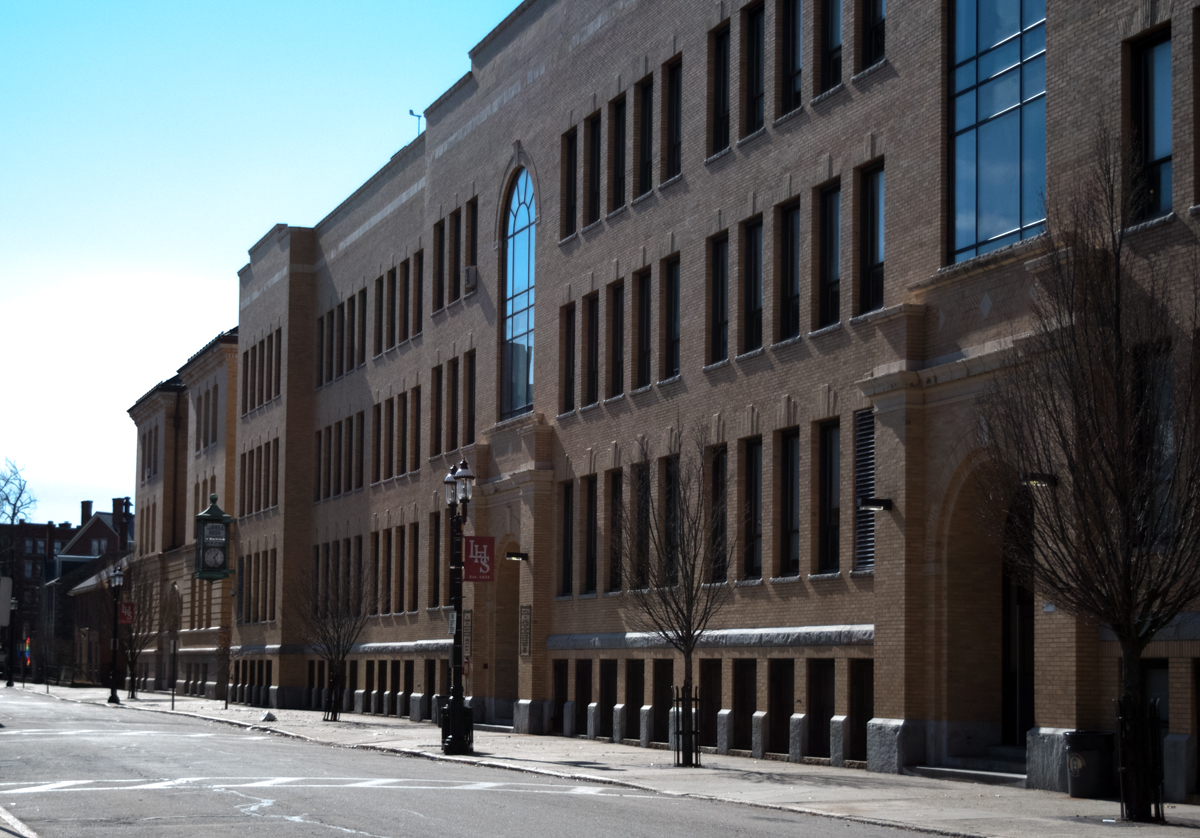 School Committee Meeting, 21 September 20166 present, Mr. Gendron AbsentThe items on tonight’s agenda were mostly routine. Business completed in just a few minutes beyond the one-hour mark. Permissions to EnterThree contracts approved for total of $120,200.MotionsWhile four motions were listed originally on the
School Committee Meeting, 21 September 20166 present, Mr. Gendron AbsentThe items on tonight’s agenda were mostly routine. Business completed in just a few minutes beyond the one-hour mark. Permissions to EnterThree contracts approved for total of $120,200.MotionsWhile four motions were listed originally on the 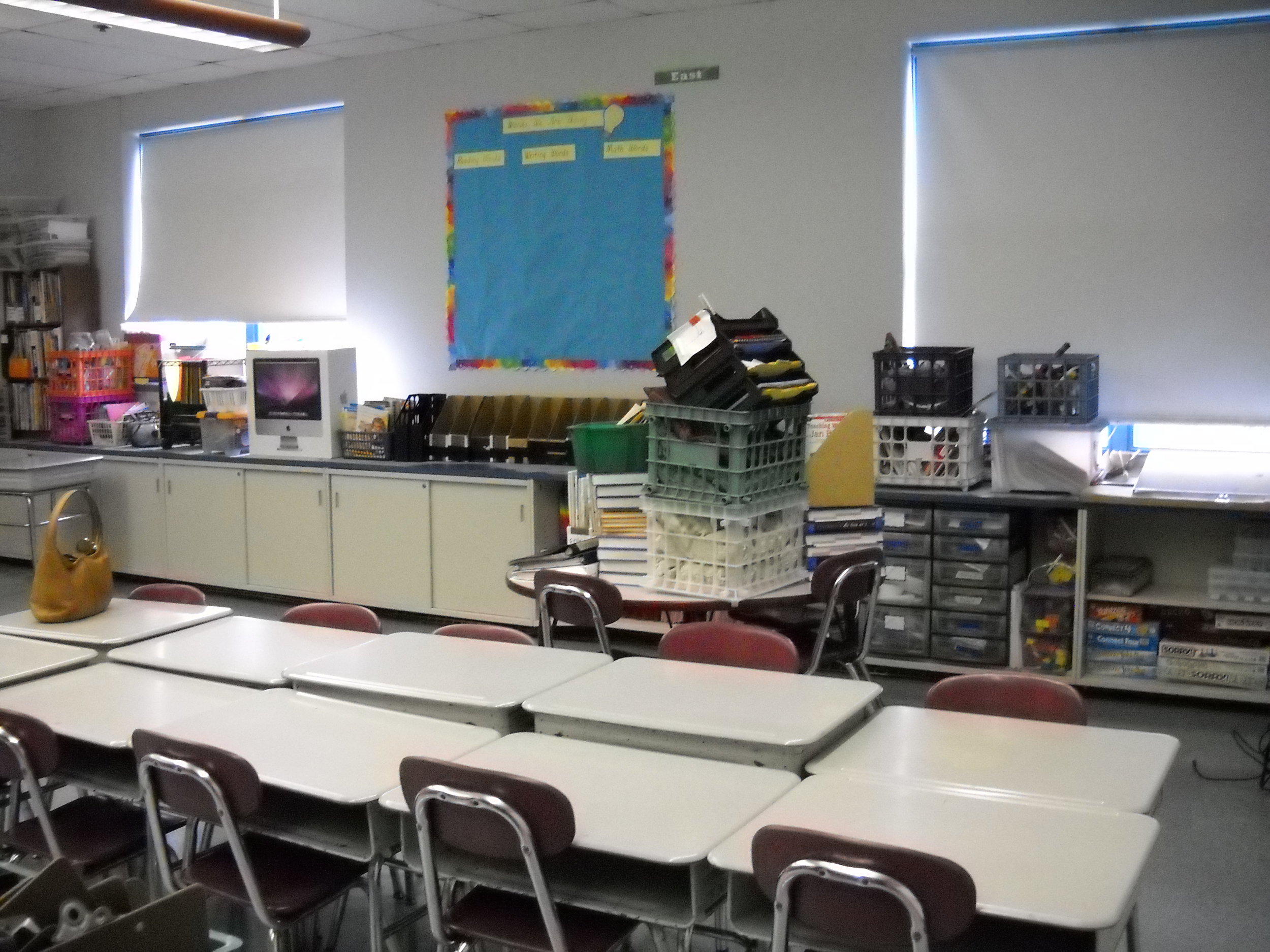 With the election about 8 weeks away, there's a lot of available "information", and I use that term lightly, about Ballot Question 2 (
With the election about 8 weeks away, there's a lot of available "information", and I use that term lightly, about Ballot Question 2 ( I'm really excited about this project!When the American Federation of Teachers-Massachusetts (AFT-MA), our local union's state affiliate, approached our local union a year ago about hosting a
I'm really excited about this project!When the American Federation of Teachers-Massachusetts (AFT-MA), our local union's state affiliate, approached our local union a year ago about hosting a 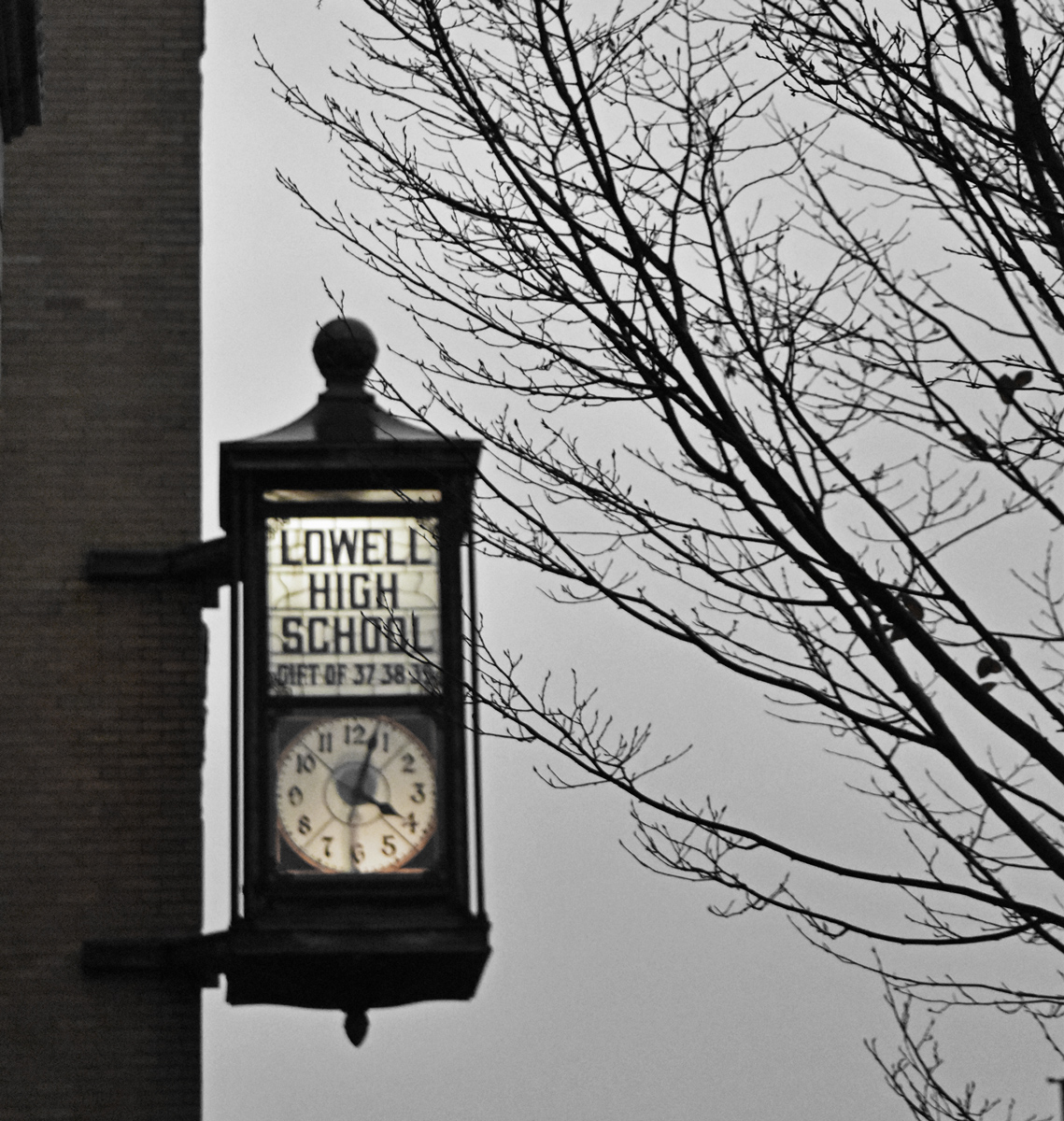 Between Tuesday’s City Council Meeting and Wednesday’s School Committee Meeting, Mayor Kennedy has done a yeoman’s job of navigating through some very highly charged Public Comment sessions.The agenda included a Public Hearing on Inter-District School Choice which quickly morphed into comment on Item 10, the Policy Subcommittee’s Report of Monday, May 16, 2016.Special Order of BusinessMayor Kennedy mentions there are 10 speakers registered to speak about Item 2016/134, Inter-District School Choice; however, after the first speaker, it was pointed out to him by Robert Gignac that many of the speakers were here to advocate for/against the policy of allowing out-of-district children of Lowell Public School staff to be educated by the Lowell Schools. I would urge anyone interested in both sides of this issue to find the
Between Tuesday’s City Council Meeting and Wednesday’s School Committee Meeting, Mayor Kennedy has done a yeoman’s job of navigating through some very highly charged Public Comment sessions.The agenda included a Public Hearing on Inter-District School Choice which quickly morphed into comment on Item 10, the Policy Subcommittee’s Report of Monday, May 16, 2016.Special Order of BusinessMayor Kennedy mentions there are 10 speakers registered to speak about Item 2016/134, Inter-District School Choice; however, after the first speaker, it was pointed out to him by Robert Gignac that many of the speakers were here to advocate for/against the policy of allowing out-of-district children of Lowell Public School staff to be educated by the Lowell Schools. I would urge anyone interested in both sides of this issue to find the 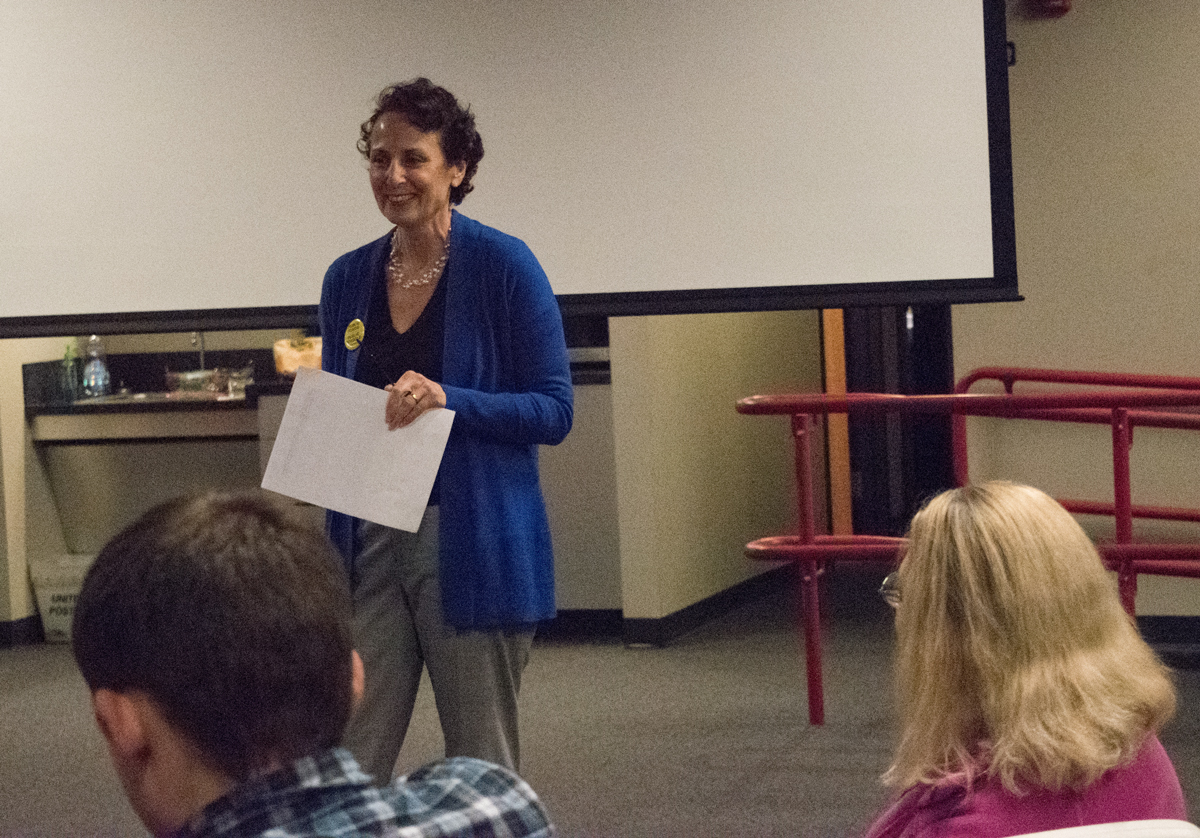 Driven by an $18 million advertising campaign, those in favor of lifting the current cap on charter school seats have launched an all-out effort to increase the number of seats allocated to charter schools. This
Driven by an $18 million advertising campaign, those in favor of lifting the current cap on charter school seats have launched an all-out effort to increase the number of seats allocated to charter schools. This 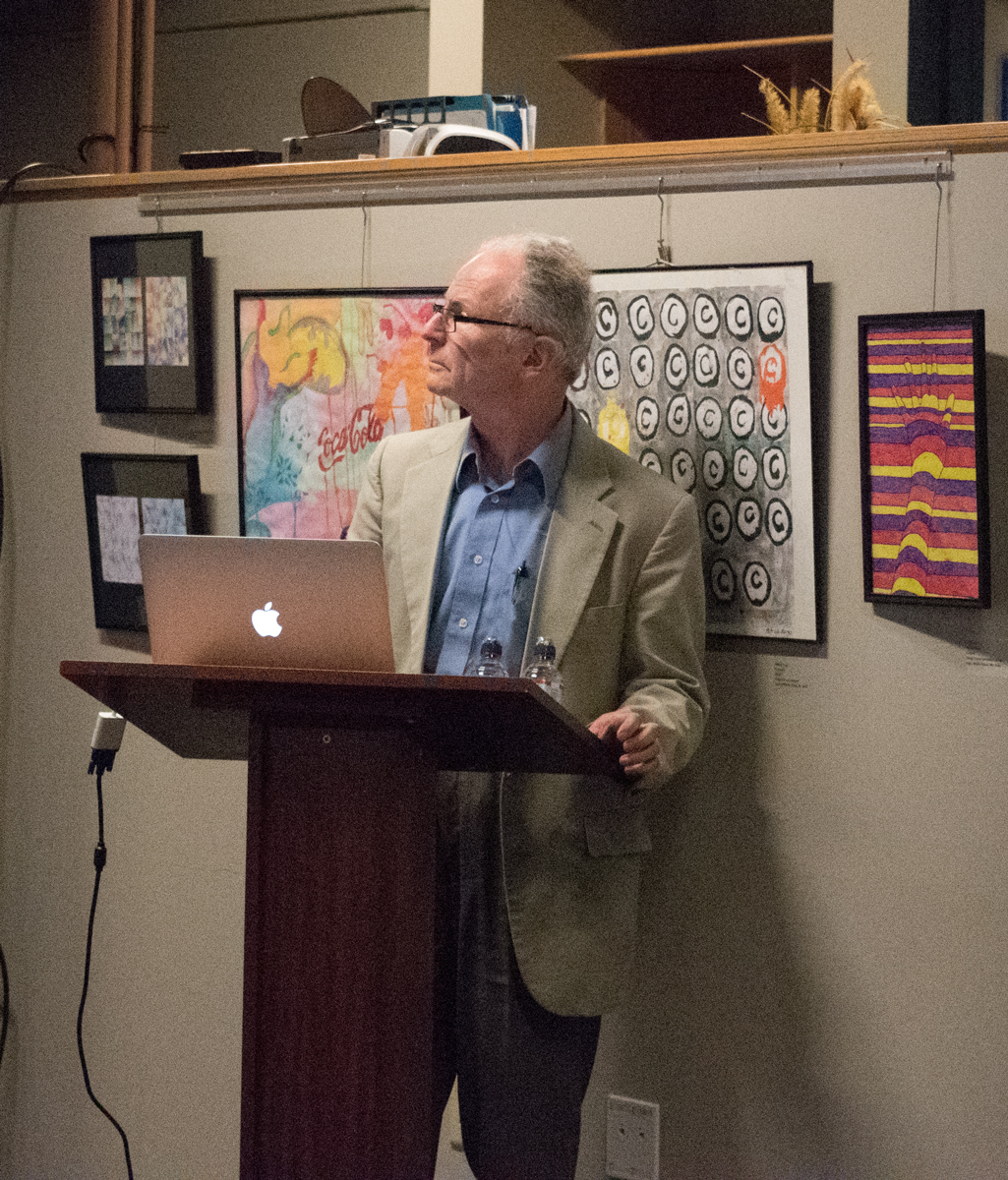 information regarding how local funding is allocated to charter schools within a district and pointed out that our very own Commonwealth does not always fund (in fact almost never) the state budget adequately to provide the legislated reimbursement to municipal budgets. The trickle down effect of the under-funding is that traditional public school budgets and/or municipalities make up the gap in funds through their own budgets.Thinking about Lowell's budget this current year, about $17 million was paid to charter schools for Lowell students and approximately $3 million was reimbursed by the Commonwealth. That $3 million was about $1.3 million short of the state's responsibility. When there is a shortfall in the reimbursement funding, the local community must fill the gap between assessed amount and state reimbursement. In other words, a traditional public school program might need to be cut or a municipal service eliminated. Cities and towns often find themselves making difficult financial decisions because the Commonwealth does not live up to its promises.According to the DESE website, Lowell's 2016-17 assessment will be based on 1,494 students enrolled in charter schools (15,300 in traditional public schools) which represents 9.8% of the foundation enrollment. A District payment of $18,430,028 will be assessed with the mythical reimbursement of $3,708,525 from the Commonwealth IF charter reimbursements are fully funded in the state budget. And if not.... well Lowell, already tightening fiscal belts and consolidating programs, will need to find the difference somewhere in the City's budget.The Q&A session from the group continued discussion about the impact of the ballot initiative fiscally and educationally. Several raised concerns about increasing charter seats and how that might impact the proposed budget for next fiscal year. There was some surprise to learn that if a student is counted as enrolled in a charter school on October 1, but leaves to return to the city's public schools after that, the per pupil funding stays at the charter school until the next school year.There was interest in continuing informational discussions in the near future.If you, or someone you know would like to continue to be informed about this issue, we invite you to email the local group at lowellcps@gmail.com to be added to the email list. Additional information about Citizens for Public Schools and their advocacy efforts can be found on either their
information regarding how local funding is allocated to charter schools within a district and pointed out that our very own Commonwealth does not always fund (in fact almost never) the state budget adequately to provide the legislated reimbursement to municipal budgets. The trickle down effect of the under-funding is that traditional public school budgets and/or municipalities make up the gap in funds through their own budgets.Thinking about Lowell's budget this current year, about $17 million was paid to charter schools for Lowell students and approximately $3 million was reimbursed by the Commonwealth. That $3 million was about $1.3 million short of the state's responsibility. When there is a shortfall in the reimbursement funding, the local community must fill the gap between assessed amount and state reimbursement. In other words, a traditional public school program might need to be cut or a municipal service eliminated. Cities and towns often find themselves making difficult financial decisions because the Commonwealth does not live up to its promises.According to the DESE website, Lowell's 2016-17 assessment will be based on 1,494 students enrolled in charter schools (15,300 in traditional public schools) which represents 9.8% of the foundation enrollment. A District payment of $18,430,028 will be assessed with the mythical reimbursement of $3,708,525 from the Commonwealth IF charter reimbursements are fully funded in the state budget. And if not.... well Lowell, already tightening fiscal belts and consolidating programs, will need to find the difference somewhere in the City's budget.The Q&A session from the group continued discussion about the impact of the ballot initiative fiscally and educationally. Several raised concerns about increasing charter seats and how that might impact the proposed budget for next fiscal year. There was some surprise to learn that if a student is counted as enrolled in a charter school on October 1, but leaves to return to the city's public schools after that, the per pupil funding stays at the charter school until the next school year.There was interest in continuing informational discussions in the near future.If you, or someone you know would like to continue to be informed about this issue, we invite you to email the local group at lowellcps@gmail.com to be added to the email list. Additional information about Citizens for Public Schools and their advocacy efforts can be found on either their